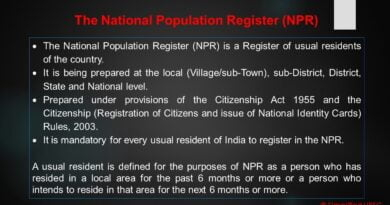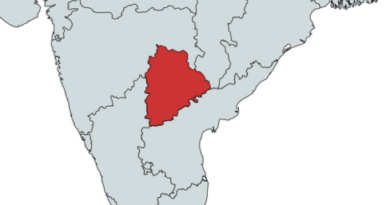Pradhan Mantri Fasal Bima Yojana (PMFBY)
(Ministry of Agriculture & Farmers Welfare)
Why in news?
Union Agriculture Minister Sh. Narendra Singh Tomar chairs a meeting with stake holders on completion of 5 Years of Pradhan Mantri Fasal Bima Yojana, Discussed challenges and way forward for the scheme with state governments, banks and insurance companies
Pradhan Mantri Fasal Bima Yojana is security cover for farmers says Narendra Singh Tomar
About Pradhan Mantri Fasal Bima Yojana (PMFBY)
The government of India in 2016, launched the Pradhan Mantri Fasal Bima Yojana (PMFBY) after scraping down the earlier insurance schemes viz. Modified National Agricultural Insurance Scheme (MNAIS), Weather-based Crop Insurance scheme, and the National Agriculture Insurance Scheme (NAIS).
- The Pradhan Mantri Fasal Bima Yojana was launched in 2016 and is being administered by the Ministry of Agriculture and Farmers Welfare, in line with the One Nation- One Scheme theme.
- It provides a comprehensive insurance cover against failure of the crop thus helping in stabilising the income of the farmers.
- Scope: All food & oilseed crops and annual commercial/horticultural crops for which past yield data is available.
- Premium: The prescribed premium is 2% to be paid by farmers for all Kharif crops and 1.5% for all rabi crops. In the case of annual commercial and horticultural crops, the premium is 5%.
- The scheme is compulsory for loanee farmers availing Crop Loan /Kisan Credit Card (KCC) account for notified crops and voluntary for others.
- The scheme is implemented by empanelled general insurance companies. The selection of the Implementing Agency (IA) is done by the concerned State Government through bidding.
What are the features of PMFBY?
- The features of Pradhan Mantri Fasal Bima Yojana (PMFBY) are as follows:
- Complete Insurance coverage provision against crop loss due to unpreventable reasons. The purpose of this is to stabilize the farmer’s income and promote innovative agricultural practices.
- Improved and increased risk coverage for the insurance of crop cycle for losses occurred during pre-sowing and post-harvesting.
- To settle claims for widespread damage, PMFBY uses an Area Approach wherein an Insurance Unit is reduced to Village or panchayat level for major crops.
- PMFBY facilitates the farmers to get their claim of the full sum insured without any reduction by taking off capping on premium provisions as well as other reductions on the sum insured.
- Along with landslide and hailstorm, even inundation (flooding) has been incorporated as a localized calamity for the assessment at the individual farm level.
- Assessment at the individual farm level is now provided for post-harvest losses by the PMFBY. This involves losses caused due to unseasonal and cyclonic rains throughout the country which destroy the crops kept for drying up to two weeks.
- Prevented Sowing is now provided with claims up to 25% of the sum insured.
- A group of districts will be allotted an insurance company. This kind of Cluster approach will result in effective implementation of the policy. The insurance company allocation will be through a bidding process for a longer duration of up to 3 years.
- Innovative technologies for faster and efficient estimation of crop losses are used. Usage of Drones, Smartphones, and Remote Sensing Technologies will ensure early settlement of insurance claims.
- An online portal for Crop insurance has been launched to ensure improved administration, better transparency and coordination, and dissemination of information.
- The insurance sum is directly credited electronically in the farmer’s bank account.
- Also, a Unified Package Insurance Scheme (UPIS) has also been approved for implementation on a pilot basis in 45 districts of the country from Kharif 2016 season to cover the other assets/activities like machinery, life, accident, house and student-safety for farmers along with their notified crops (under PMFBY/ Weather Based Crop Insurance Scheme – WBCIS)
Revamping the Pradhan Mantri Fasal Bima Yojana
To address the challenges in the implementation of the crop insurance scheme, the Union Cabinet has approved to revamp the PMFBY and to bring modifications to its existing provisions. The major parameters set to be modified are:
- For north-eastern states, the centre’s share in premium subsidy to be increased to 90% from 50% earlier.
- A separate scheme to be brought out for 151 highly water-stressed districts.
- Information, Communication and Education (ICE) Activities – 0.5% of the total premium collected by the insurance companies to be spent on ICE activities.
- Flexibility to states:
- States/UTS to be given an option to choose their scale of finance for any district crop combination.
- States/UTs given option to run the scheme with the selection of additional risk covers.
- Cap on Centre’s Premium Subsidy:
- For unirrigated areas/crops, the central subsidy to be limited for premium rates up to 30%
- For irrigated area/crops, the central subsidy to be limited for premium rates up to 25%.
- Those districts that will have an area under irrigation for more than 50% will be considered as an irrigated district.
- Penalty on states:
- If a state delays to release requisite premium subsidy to insurance companies beyond a set time-limit (March 31 – For Kharif Season; September 30 – For Rabi Season), states will not be allowed to run the scheme in subsequent seasons.
- To conduct Crop Cutting Experiments (CCEs), there will be the adoption of technology solutions including Smart Sampling Technique (SST).
Why is Pradhan Mantri Fasal Bima Yojana being revamped?
- To make farmers’ self-sufficient to manage risk in agriculture production.
- To stabilise the farm income.
- To enable farmers of North-Eastern states to manage agriculture risks.
- Enable faster claims settlements through quick and accurate yield estimation.
What is covered under PMFBY?
The Pradhan Mantri Fasal Bima Yojana will cover the following cases under crop insurance:
- Local natural calamities like landslides, hailstorms, etc.
- Calamities leading to loss of yield like floods, dry spells, droughts, etc. Pest infestation that causes yield loss is also covered by PMFBY.
- Losses occurred after harvesting crops can also be covered under this scheme. These circumstances may befall due to cyclones, unseasonal rains, cyclonic rains, etc.
- Nevertheless, PMFBY does not provide any safety against the following circumstances:
- Losses occurred due to war or similar hazardous activities.
- Loss of yield due to the act of enmity or riots.
- Yield destruction caused by domestic and/or wild animals
- Contamination due to nuclear risks.
- Malicious damage leading to yield carnage.
- It is proposed by the scheme to use remote sensing technology, smartphones, or drones to expedite the crop loss estimation.
PMFBY Objectives
Pradhan Mantri Fasal Bima Yojana (PMFBY) aims at providing support for the sustainable production of yield in the agricultural sector. PMFBY will achieve this by implementing the following:
- Financial support will be provided to farmers in distress due to loss and damage to crops caused by unexpected calamities.
- Making sure the income of farmers is stabilized for them to continue their farming activities.
- Promoting farmers to adopt and use modern equipment and agricultural practices for efficient and high yield farming.
- Ensuring the flow of credit to the agriculture sector which contributes to food security, crop diversification, and enhancing growth and competitiveness of the agriculture sector besides protecting farmers from production risks.
PMFBY failure in Northeast India?
- Out of the seven states of Northeast India, the states of Mizoram, Nagaland, Manipur, and Arunachal Pradesh are not covered under the PMFBY Insurance scheme.
- This is due to the Insurance company’s lack of interest in the states of the North-east. Along with it, the inability of the state to pay its insurance premium share due to insufficient budget adds on to the challenges.
- Other factors for the PMFBY failure in North-east include:
- The high administrative costs in these states make the insurance companies hesitant towards bidding for these states.
- Lack of proper land records and other historic yield data in the states, especially at the block level gram panchayat level.
- Crop cutting experiments that give a fair, precise, and accurate yield estimation of the crops face difficulties in conducting, which is necessary for horticulture crops.
- Since the number of loanee farmers is less is Northeast, except Assam, the insurance coverage is limited. This tends to push away the insurance companies.
- Insurance schemes based on the weather in these states are affected due to the unavailability of proper forecasting infrastructure.
- The State governments either need to go with the PMFBY scheme or have to have their own set of schemes for the sake of farmers.
Discover more from Simplified UPSC
Subscribe to get the latest posts sent to your email.


